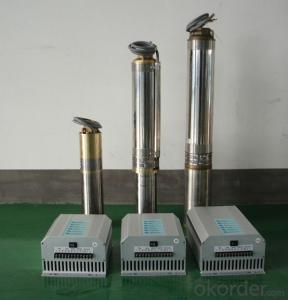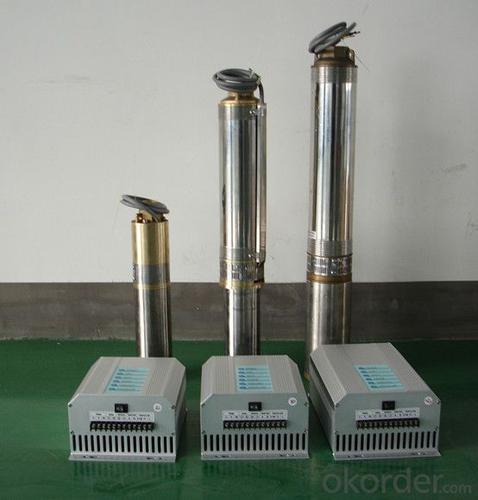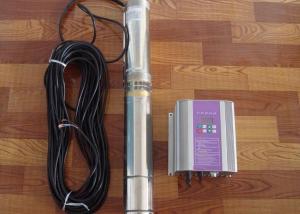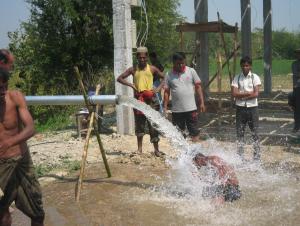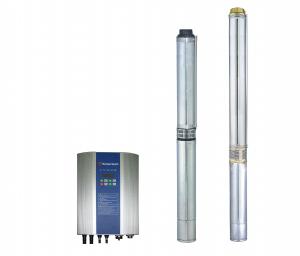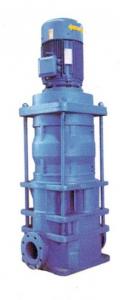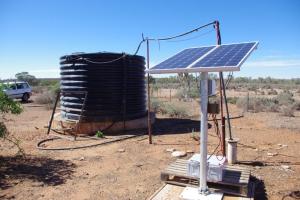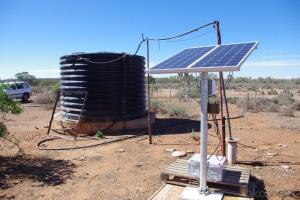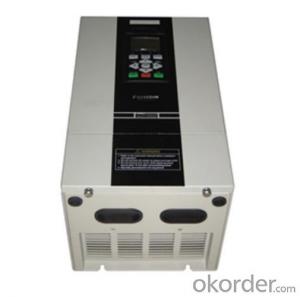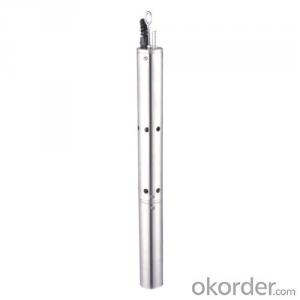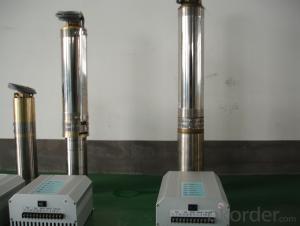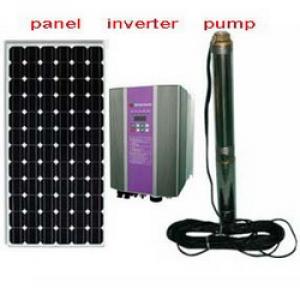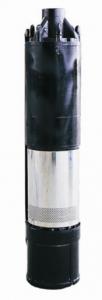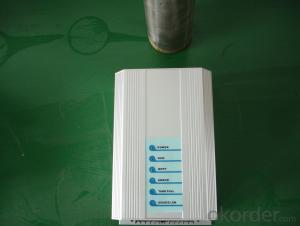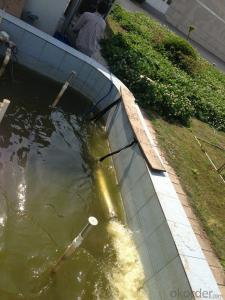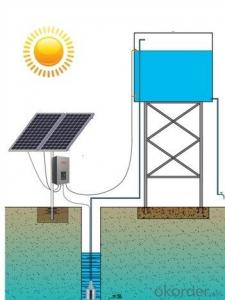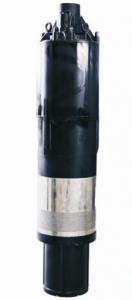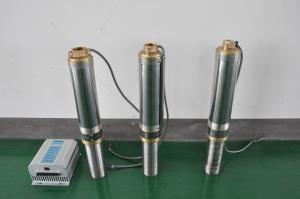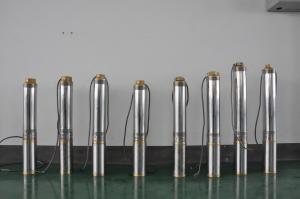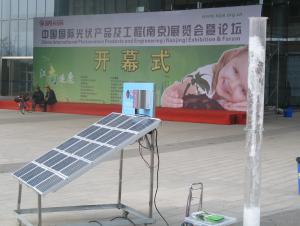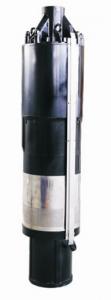12 Volt DC Solar Water Pump
- Loading Port:
- China Main Port
- Payment Terms:
- TT OR LC
- Min Order Qty:
- -
- Supply Capability:
- -
OKorder Service Pledge
OKorder Financial Service
You Might Also Like
Item Description :
This superb new addition to our solar fountain range comes with a 10w solar panel,and a powerful fountain pump that is capable of producing fountains of up to 2m in height. As well as being easy to set up and use.Instruction manual is supplied for assembly and maintenance.
Solar Fountain Key Features :
Powered by direct sunlight
No high voltage electric mains required
Safe for children
Max. height of fountain: 2M
Max. flow capacity: 800 L/H(176 GAL)
10W Polycrystalline solar panel included
18V DC brushless pump
Solar Pump Features :
Can produce fountains up to : 2M (tube height) 1.4M (fountain height)
Comes with multiple nozzle accessories
Cable Length : 5M
Solar Panel Features :
10W peak power.
Polycrystalline highly efficient solar panel
Comes mounted in aluminium frame
Comes with ground stake and rotating knob so you can angle your panel toward the sun
What You Will Get :
10W solar panel
Solar pump
Ground Sake
Nozzle accessories
Precautions :
DO NOT alter or change the product itself or its components
Operate pump in freshwater only, never above 50 degrees celsius
Keep away from flammable liquids
Do not connect to any other power supply other than the included
- Q: Are there any grants or funding options available for installing a solar pump?
- Yes, there are grants and funding options available for installing a solar pump. Many government and non-profit organizations offer financial assistance programs specifically designed to support the adoption of solar-powered systems, including solar pumps. These funding opportunities aim to promote renewable energy and sustainable water management practices. It is recommended to research and reach out to local and national agencies, as well as private foundations and environmental organizations, to explore the available grants and funding options for installing a solar pump.
- Q: Can a solar pump be used for dewatering purposes?
- Yes, a solar pump can be used for dewatering purposes. Solar pumps are designed to extract water from a source, such as a well or a flooded area, and can effectively drain water for dewatering purposes. They are powered by solar energy, making them a more sustainable and cost-effective option compared to traditional pumps that rely on electricity or fuel.
- Q: Can a solar pump be used in areas with limited access to water demand?
- Yes, a solar pump can be used in areas with limited access to water demand. Solar pumps are a sustainable and cost-effective solution for pumping water from wells, rivers, or other sources in remote or off-grid locations. As long as there is sufficient sunlight, a solar pump can efficiently provide water for various applications, such as irrigation, livestock watering, or domestic use, even in areas with limited water demand.
- Q: Can a solar pump be used for water supply in industrial applications?
- Yes, a solar pump can be used for water supply in industrial applications. Solar pumps are reliable and efficient systems that can provide a sustainable solution for water supply in industrial settings. They can be used for various purposes such as irrigation, water circulation, and even water treatment processes. With advancements in technology, solar pumps have become increasingly popular in industrial applications due to their cost-effectiveness, low maintenance requirements, and environmentally friendly operation.
- Q: Can a solar pump be used for fire-fighting purposes?
- Yes, a solar pump can be used for fire-fighting purposes. Solar-powered water pumps are commonly used in areas where there is no access to electricity or during emergencies. These pumps utilize energy from the sun to power the motor, which in turn drives the pump to move water. In fire-fighting scenarios, solar pumps can be used to draw water from a nearby source such as a well, pond, or river and supply it to firefighters for extinguishing fires. They are portable, easy to set up, and can provide a reliable source of water without the need for electricity or fuel. However, it is important to note that the performance of a solar pump may vary depending on factors such as sunlight availability and pump capacity, so it is crucial to ensure that the pump is properly sized and suited for the specific fire-fighting requirements.
- Q: How does a solar pump handle water with high levels of organic matter or decaying materials?
- A solar pump can handle water with high levels of organic matter or decaying materials by utilizing filters and screens. These components help to prevent the clogging of the pump and ensure that only clean water is being pumped. Additionally, regular maintenance and cleaning of the filters is necessary to maintain the efficient functioning of the solar pump in such conditions.
- Q: Can a solar pump be used for water supply in agricultural or farming operations?
- Yes, a solar pump can be used for water supply in agricultural or farming operations. Solar pumps are an effective and sustainable solution for providing water to crops, livestock, and irrigation systems. By harnessing solar energy, these pumps eliminate the need for electricity or fuel, reducing operational costs and environmental impact. They can be used in remote areas with limited access to power grids and are particularly beneficial in regions with abundant sunlight. Solar pumps are reliable, efficient, and can help promote sustainable agriculture practices.
- Q: Are there any limitations on the maximum height or elevation that a solar pump can pump water?
- Yes, there are limitations on the maximum height or elevation that a solar pump can pump water. The pump's maximum pumping height is determined by factors such as the power of the solar panels, the efficiency of the pump, and the atmospheric pressure. Typically, solar pumps can lift water to a maximum height of around 100-200 meters, but this can vary depending on the specific model and setup.
- Q: Can a solar pump be used for residential purposes?
- Yes, a solar pump can indeed be used for residential purposes. Solar pumps are commonly used in residential settings for various applications such as supplying water for irrigation, livestock, or even domestic use. They are environmentally friendly, cost-effective, and can provide a reliable source of water using solar energy.
- Q: What is the maximum temperature a solar pump can withstand?
- The maximum temperature a solar pump can typically withstand is around 50-60 degrees Celsius.
Send your message to us
12 Volt DC Solar Water Pump
- Loading Port:
- China Main Port
- Payment Terms:
- TT OR LC
- Min Order Qty:
- -
- Supply Capability:
- -
OKorder Service Pledge
OKorder Financial Service
Similar products
Hot products
Hot Searches
Related keywords
